Why Learn How to Draw the Skull
Drawing fundamentals are literally the structures that you build your drawings on. To draw heads and faces, the skull is the most important thing to understand. In this post, we will be showing you how to sketch out the skull from the front and side view.
In this article, you’ll learn:
- The basics of skull drawing
- Simple steps to follow
- Get it right every time
How to Draw the Skull: The Oval
There are several different methods you can use to draw the skull, but this is one of the easiest and quickest ways to learn. It’ll also give you a pretty accurate base to start from in your drawing.
Begin drawing the skull by sketching an oval shape for the head. This will represent the cranium. The oval shape will help us draw a more accurate skull, because it is not perfectly round, it is a little squished.
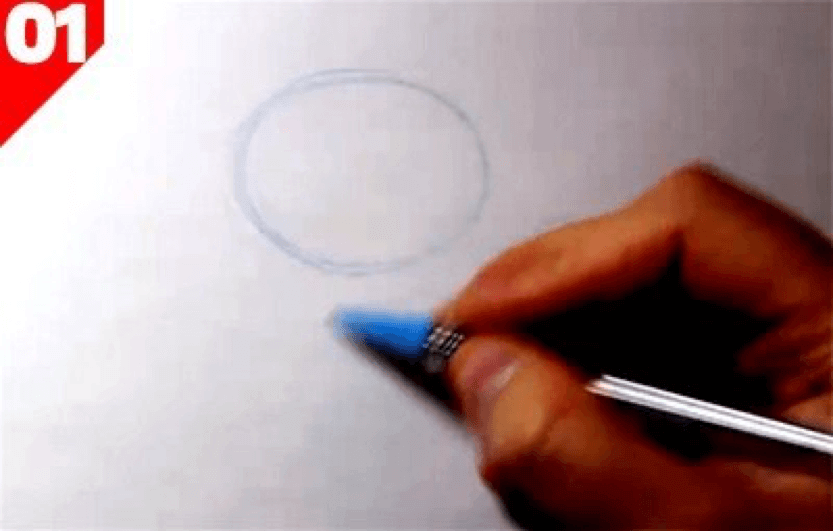
The Jaw
Next, you’ll need to divide the oval shape you drew in the previous step with a horizontal and vertical line. The vertical line passes through the middle of the oval shape, and the horizontal line is slightly lower. This is where the eye line of your character will be.
Using this as a guide you will draw in the blocky shape of the nose, mouth, and jaw. It sits at the bottom of the skull and attaches at the center or at the horizontal dividing like we established in our last step.
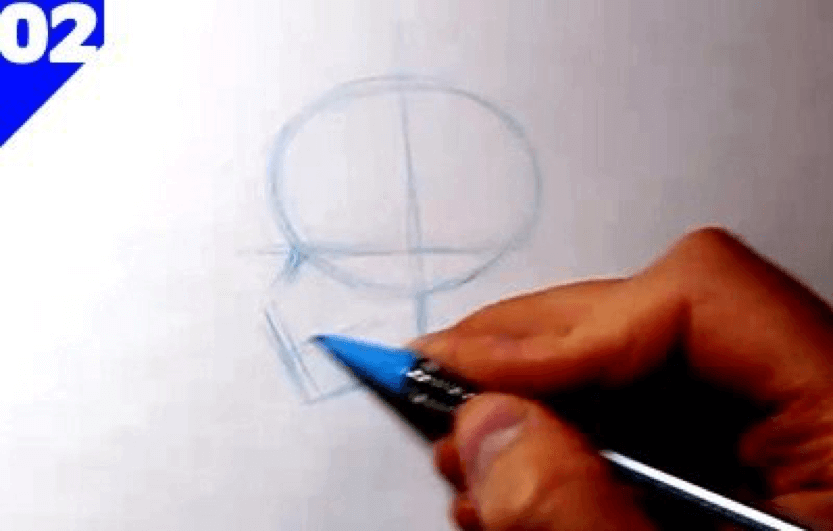
The Teeth
The next step in learning how to draw a skull is to add the line across the jaw for the teeth. The line of the teeth follows the line of the lower part of the jaw and then curves up to join the major form of the skull.
Finish off the teeth by sketching in some light lines. Don’t worry about making the teeth perfect at this stage. Most of the time, you won’t need to draw the teeth individually, because they will be hidden by the lips.
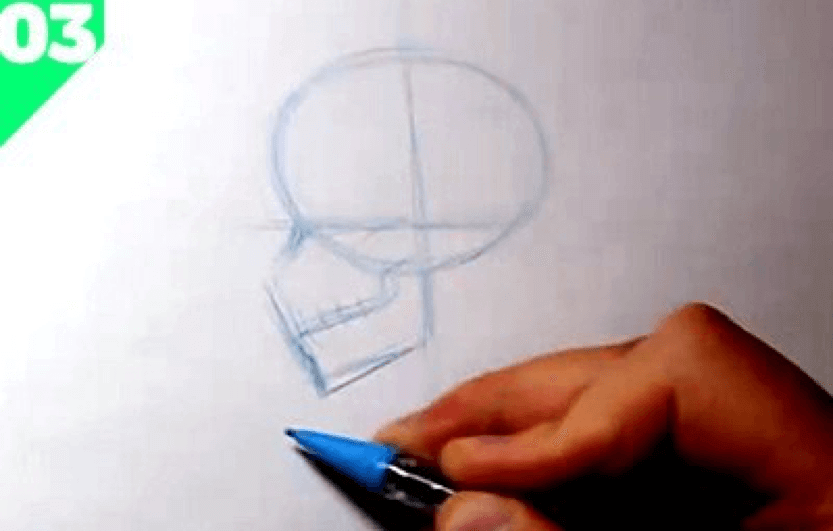
The Spine
Now it’s time to add the spine to your skull drawing. A lot of beginner artists draw the spine coming down from the center of the skull, but this isn’t correct. The spine actually comes down from towards the back part of the skull.
To see for yourself, reach your hand to the back of your neck, and then feel the bump of your spine. Follow the spine up to where it connects to your head. Do you notice how it’s not actually in the center of your skull?
Tip: If you’d like to learn more about drawing the human body, your own body is a great reference point to start with. It doesn’t matter if you are learning how to draw a skull, how to draw a face or any other part of the body – just grab a mirror, a pencil, and some paper, and get drawing. Everything you need to learn is right before your eyes.
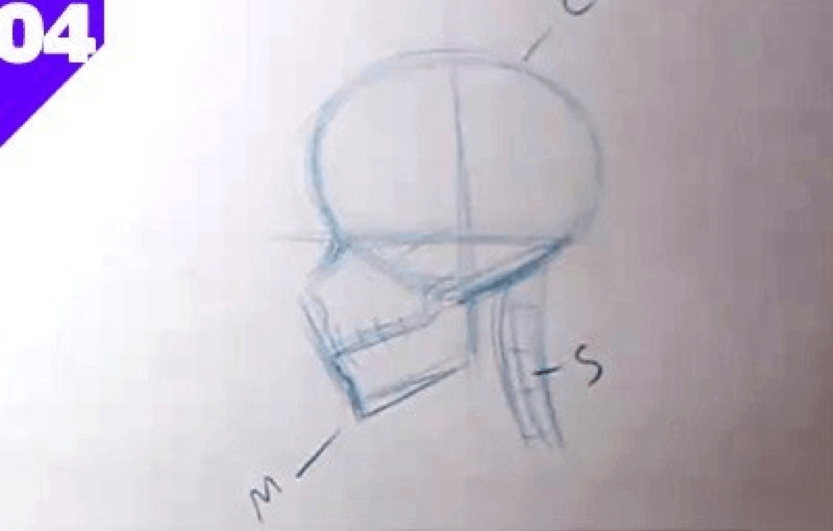
The Front of the Face
Draw horizontal lines to give you the right proportions for the front view of your skull.
Now that you’ve learned how to draw a skull from the side, why not do another drawing of the skull from the front?
To get started, draw some horizontal guidelines extending from the right side of your side view skull drawing like in the image above.
When you are drawing the front view of the skull, you can use these lines to make sure the major parts match up in both drawings.
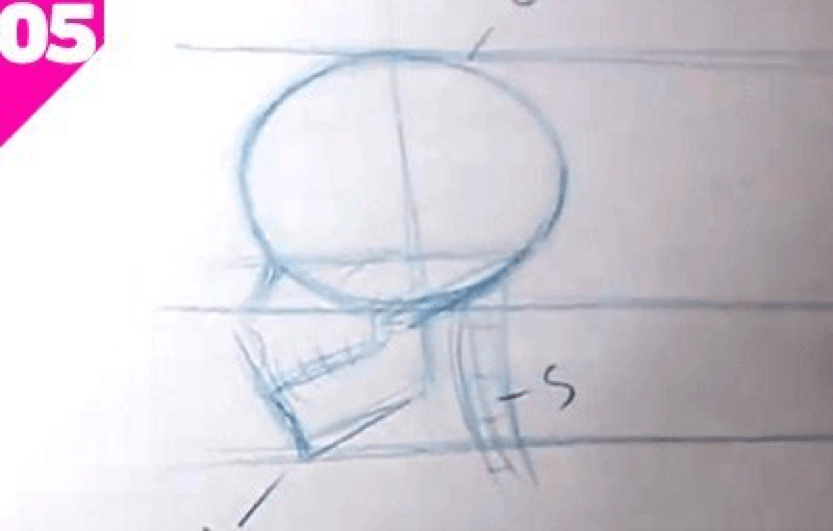
Drawing the Front View
The horizontal guidelines for drawing the skull are:
- The top of the skull
- The lowest point of the skull oval shape
- The lowest point of the jaw bone
To draw the skull from the front, start off by drawing a circle. In the video, you’ll notice how this circle isn’t squished like the oval shape you drew for the side view.
After drawing the circle, draw some lines going down to indicate where the jaw will be.
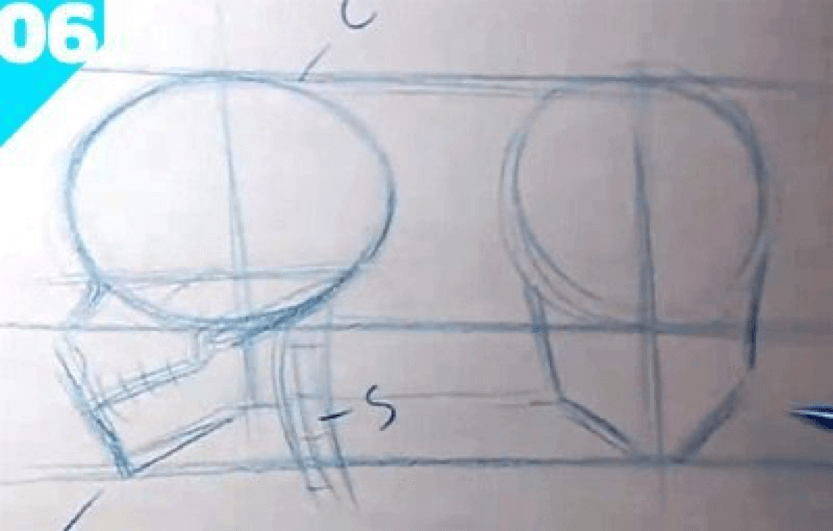
Placing Eye Sockets
Notice how we draw additional horizontal guidelines to place the features in the same spot in both the side and front views. These are really useful for keeping the front and side views of the skull in proportion.
Continue refining your drawing of the human skull, and begin making the lines darker once you’ve drawn them correctly.
By this stage, you should have most of the facial features added to your drawing, which means you’re almost done with learning how to draw a skull!
Art Tip: It’s a great idea to buy a replica human skull to use as a reference. You can find these easily on a certain popular auction website, and they cost around $20.
Buying one of these will really help you understand the anatomy of the skull. For example, you’ll be able to see exactly what the cheekbone looks like, or how the lower jaw attaches to the rest of the skull.
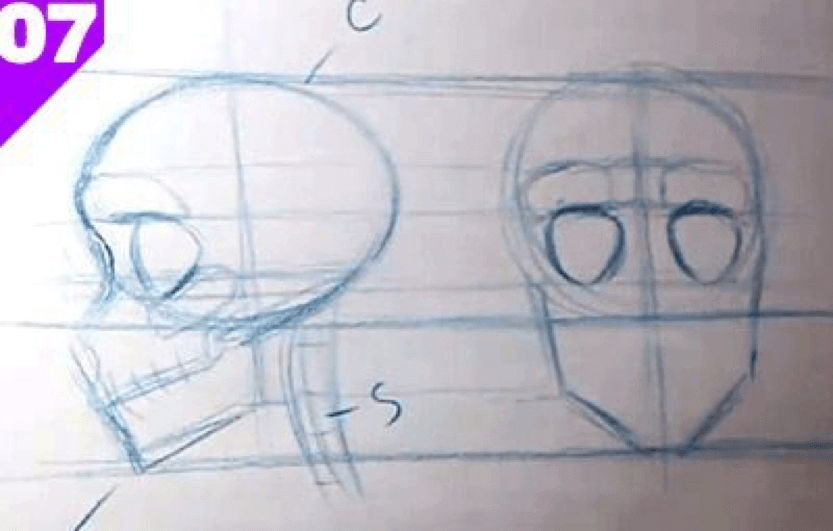
Defining the Jaw and Teeth
Next, we are going to add more definition to the jaw. There are a few things to remember,
- The bottom of the jaw is a separate bone from the top of the head
- The jaw can move, but the rest of the head is completely stationary
- The jaw attaches to the skull via a hinge like connection
- This hinge allows the jaw to open and close
- The jaw is able to move in other directions but is quite limited in range
Now as you may notice in the image above, the jaw has a cavity. That cavity is the area behind the teeth. Beyond this, the jaw turns upward once again, this is where the jaw attaches to the top of the skull allowing for the movement we have in our jaw.
Continuing keeping both the heads proportionally similar, we need to bring over a new line that will indicate where the bottom of the teeth is sitting on our skull. In this view, the shape of the jaw is a bit different.
Our last step is to indicate the position of the teeth. Using our guidelines we can see where we put the teeth on the side view of our skull, and place them similarly on the front view.
Learning how to draw a skull is really important if you want to draw realistic-looking faces. So, just keep practicing until you get it right ?
Because if you’re serious about drawing characters or portraits, this is one of the best ways to develop as an artist!
And, once you’ve learned how to draw a skull, why not take your art skills further and learn how to draw facial features?
TIP: to expand your knowledge on drawing the face, it’s important to study the individual features one at a time before jumping into drawing the whole face.
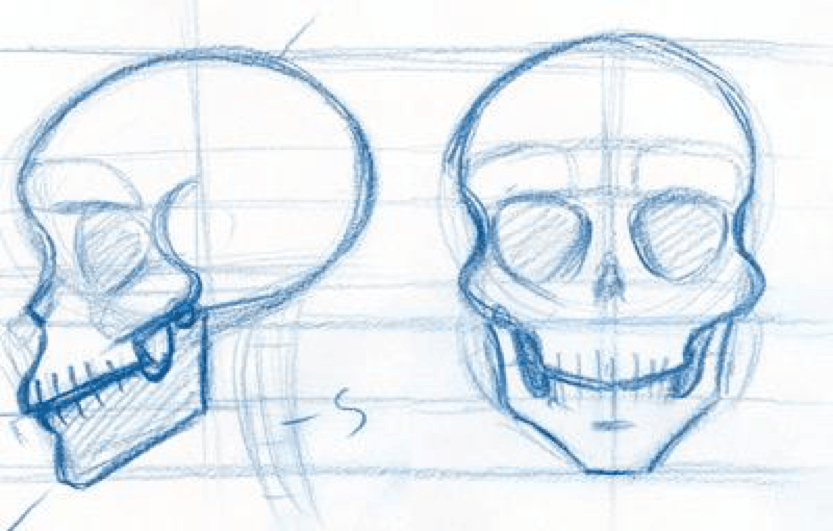
ASSIGNMENT
Finding skull references should be pretty easy, the entire world has a fascination with them, probably because we can’t see them with our own eyes, while we are alive. But for artists this is exactly why we must study them, because it’s the only way to truly understand the proportions of the face. So, looking at reference, sketch out fifty different skills in as many views as you can find.